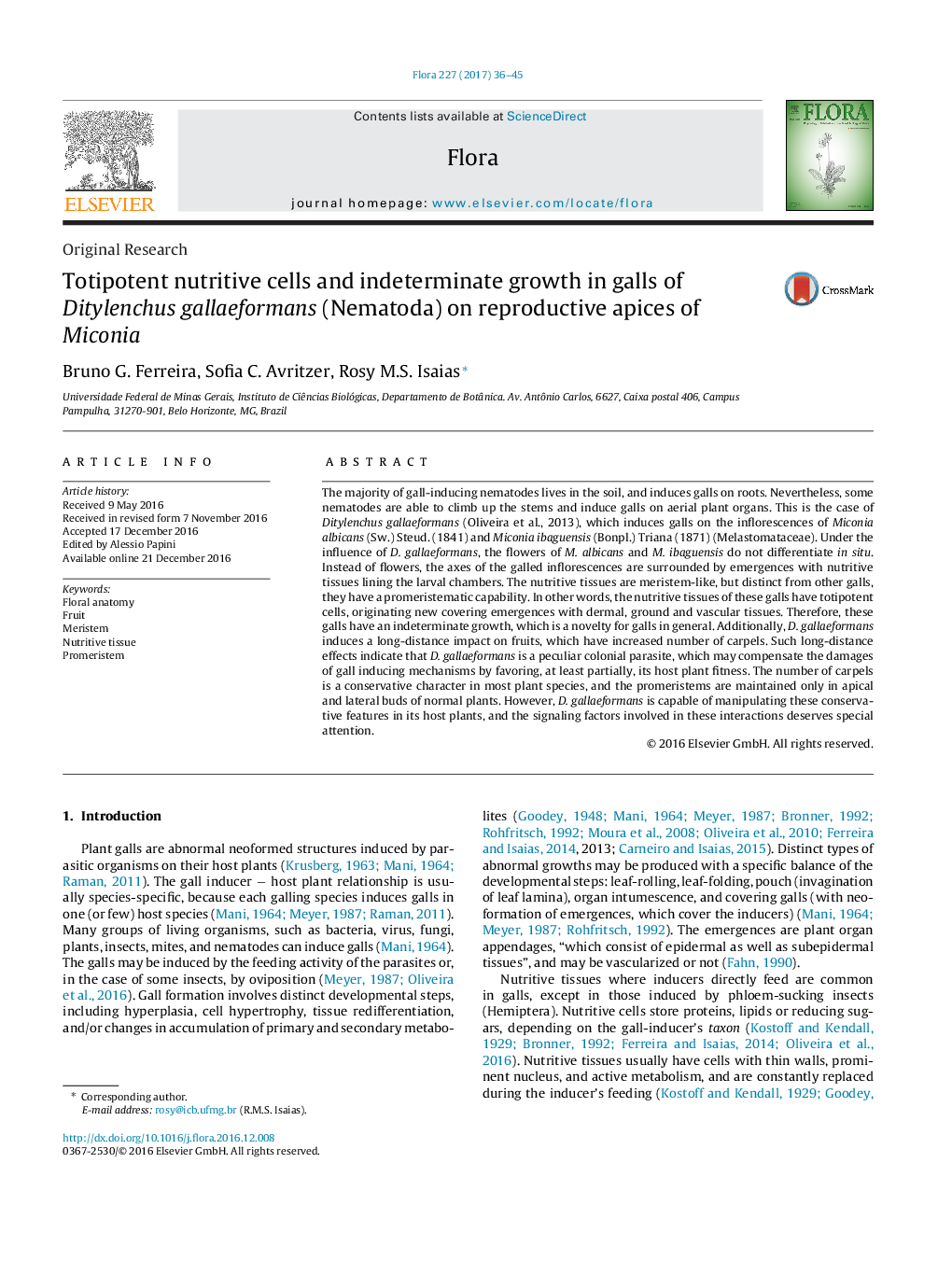| کد مقاله | کد نشریه | سال انتشار | مقاله انگلیسی | نسخه تمام متن |
|---|---|---|---|---|
| 5532376 | 1549932 | 2017 | 10 صفحه PDF | دانلود رایگان |

- Ditylenchus gallaeformans induces galls with promeristematic nutritive tissues.
- Emergences differentiate from the nutritive cells in these galls.
- Ditylenchus gallaeformans is capable of causing long-distance effects.
- Fruits of infected individuals may have more carpels than normal fruits.
The majority of gall-inducing nematodes lives in the soil, and induces galls on roots. Nevertheless, some nematodes are able to climb up the stems and induce galls on aerial plant organs. This is the case of Ditylenchus gallaeformans (Oliveira et al., 2013), which induces galls on the inflorescences of Miconia albicans (Sw.) Steud. (1841) and Miconia ibaguensis (Bonpl.) Triana (1871) (Melastomataceae). Under the influence of D. gallaeformans, the flowers of M. albicans and M. ibaguensis do not differentiate in situ. Instead of flowers, the axes of the galled inflorescences are surrounded by emergences with nutritive tissues lining the larval chambers. The nutritive tissues are meristem-like, but distinct from other galls, they have a promeristematic capability. In other words, the nutritive tissues of these galls have totipotent cells, originating new covering emergences with dermal, ground and vascular tissues. Therefore, these galls have an indeterminate growth, which is a novelty for galls in general. Additionally, D. gallaeformans induces a long-distance impact on fruits, which have increased number of carpels. Such long-distance effects indicate that D. gallaeformans is a peculiar colonial parasite, which may compensate the damages of gall inducing mechanisms by favoring, at least partially, its host plant fitness. The number of carpels is a conservative character in most plant species, and the promeristems are maintained only in apical and lateral buds of normal plants. However, D. gallaeformans is capable of manipulating these conservative features in its host plants, and the signaling factors involved in these interactions deserves special attention.
Journal: Flora - Volume 227, February 2017, Pages 36-45